
Facebook Twitter Instagram YouTube
Written on: December 22nd, 2025 in Education and Outreach, Natural Resources
By Olivia Allread, DNREC’s Wetland Monitoring and Assessment Program
Sanctuary. All seek it, some search, and a lucky few can find it. As we know, these “sacred” spaces can come in many different forms and represent an untouched meaningfulness which is irreplaceable. One of a kind so to speak. At the far end of the Alaska Peninsula, where the land turns into the Bering Sea, sits a haven of this nature. A remote wetland habitat few know exist and even fewer visit, the Izembek National Wildlife Refuge. The wetlands across this landscape are some of the most unparalleled habitats in world, providing sanctuary to plants and animals of critical importance and are an intact wilderness of global significance. Get to know this refuge and explore its ecological value to all.
The Basics
Due to its remote location and geographical position, the majority of us will never visit this refuge, so we need to know what we’re working with. Though it is the smallest wildlife refuge in Alaska at 310,000 acres in size, roughly the same acreage as Grand Teton National Park, it’s one of the most ecologically unique refuges in the entire U.S. system. Established in 1960 by President Eisenhower as the Izembek National Wildlife Range, the country knew then this was a special place. In 1980, President Carter signed the Alaska National Interest Lands Conservation Act (ANILCA) into law which redefined the area as the Izembek National Wildlife Refuge. ANILCA designated 300,000 acres (nearly all Izembek) as a Wilderness Area, which in congressional language means these areas are designated and intended to have the highest levels of protection to lands by permanently restricting roads and other industrial developments – on top of a smattering of other protections and regulations. Moreover, it was the first place in the U.S. to be designated under the RAMSAR Convention as a Wetland of International Importance with focus on its series of lagoons and surrounding marshes along the coasts. This place is a big deal.
The allure of this refuge has to do with its reclusiveness. Weather wise, you can typically expect cold temperatures with rain, wind, and fog with virtually no visitors. If you happen to have gotten there, it’s probably through the local community of Cold Bay (outside of the refuge itself) via boat, small plane, or off-road vehicle. Though Izembek has a headquarters with a mini visitor’s center in Cold Bay, there are no public-use facilities in the refuge. Just beautiful, sprawling wilderness.
The Wetlands, Water, and Wildlife
Tucked between the rich waters of the Gulf of Alaska and the Bering Sea, the refuge is full of complex coastal wetland habitats that span miles. Its brackish waters also encompass hundreds of lakes, meandering streams, glaciers, and hot springs. The low bush tundra surrounding the wetland landscapes goes from sea level to volcanic mountains above 9,000 feet. Yes, you heard that right, wetlands and volcanoes right next to each other in a tundra climate. One of the most notable features is the Shishaldin Volcano, that despite having intense eruptions, has held its almost perfect cone shape for centuries.
At the heartbeat of these wetlands is the Izembek Lagoon, home to the world’s largest beds of eelgrass (Zostera marina). Spanning approximately 42,000 acres (65 square miles), these shallow beds are an essential source of food for many species throughout the refuge and a critical plant in coastal wetlands. The eelgrass meadows provide habitat and create nurseries for invertebrates, fish, and birds and create a corridor for larger mammals who roam Izemebek – but we will get to those in a bit! To top it all off, eelgrass is known as the “rainforest of the sea” and acts as a good ecological indicator of an ecosystem’s health because of its connection to species diversity, water quality, carbon storage, and shoreline protection.
Now onto the wildlife. In true wetland form, seasonal and permanent havens exist for more than 200 bird and mammal species and 40 fish species across Izembek. Three major migratory bird flyways collide making the refuge a hotspot for our incredible avian friends: the East Asian-Australasian, West Pacific, and Pacific Americas flyways. Millions upon millions of birds visit the shores of the lagoons and wade into the wetlands for food, to find shelter, and take a load off after a long journey. Virtually the world’s entire population of the Pacific black brant and emperor goose stop at Izemebek to feed on the massive eelgrass beds during their seasonal migrations. Some species fly over 2,500 miles to reach the refuge! As a crucial wildlife travel corridor along the Alaska Peninsula, Izembek’s isthmus provides a passage for brown bears, caribou, and wolves, as well as safe places for them to rear their young. Year-round residents like the tundra swan, red fox, and moose can be seen frolicking on the shorelines. Minke, gray, and killer whales migrate by the thousands along the cold-water coasts. Hundreds of thousands of salmon begin and end their life cycles in Izembek’s streams. Such a plethora of species are supported in this dynamic coastal ecosystem, and the list could go on, but below are a few more.
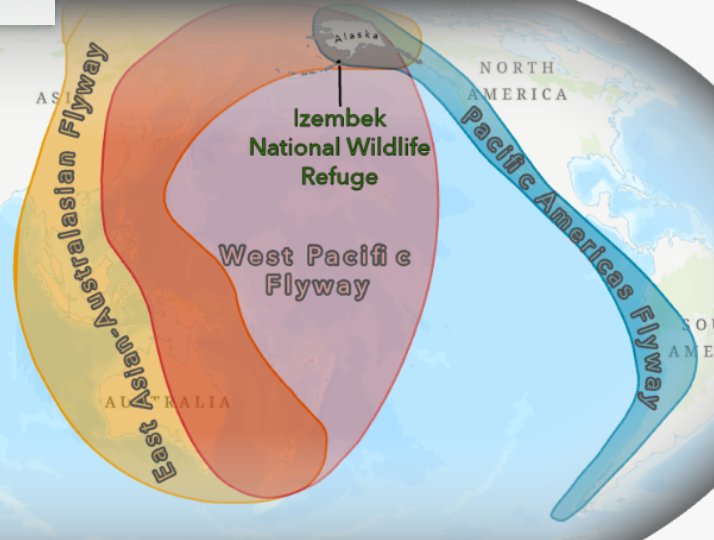

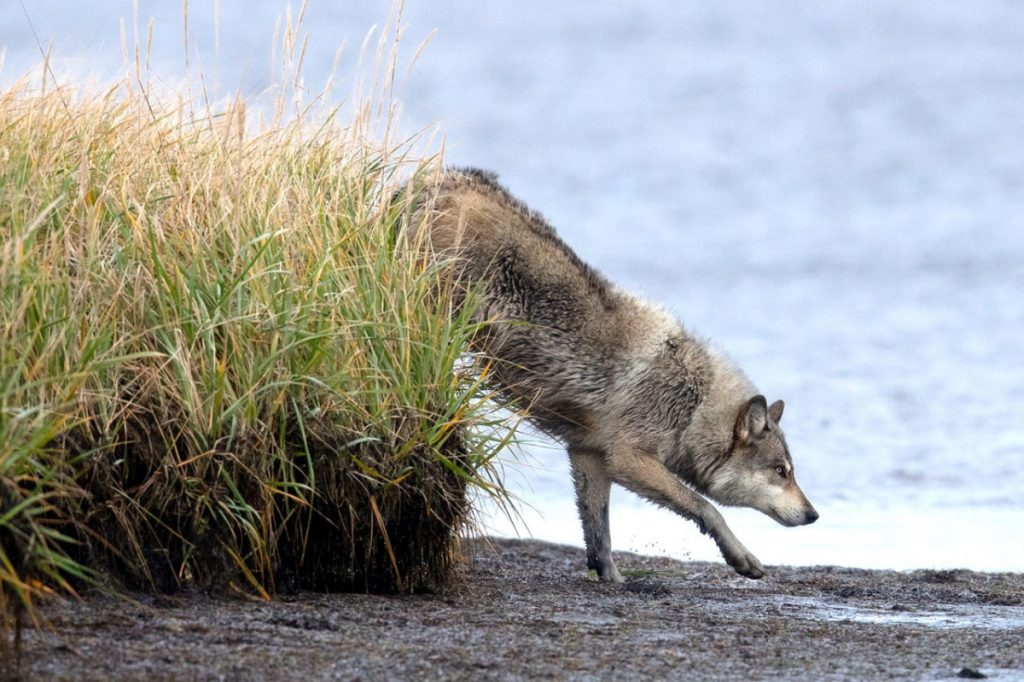
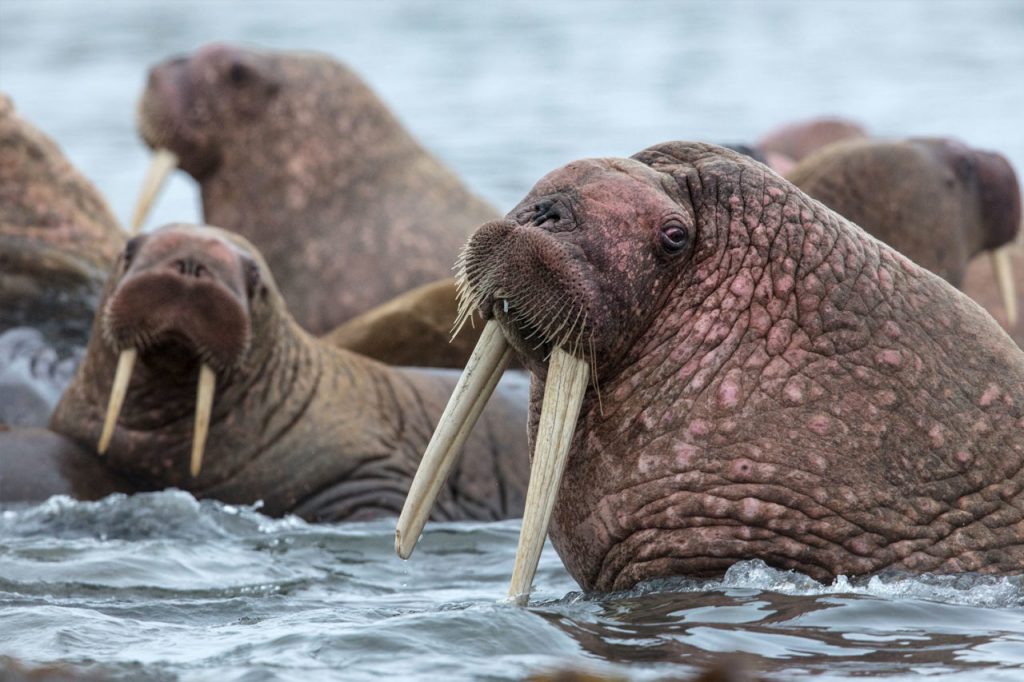
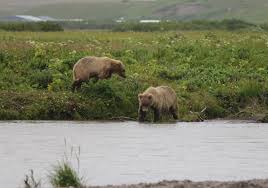
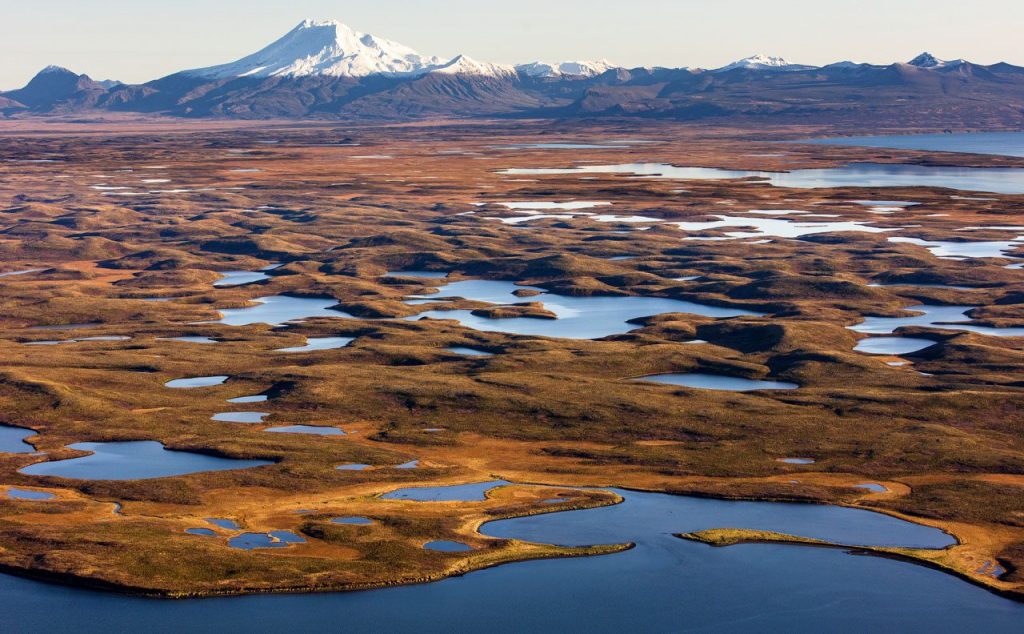
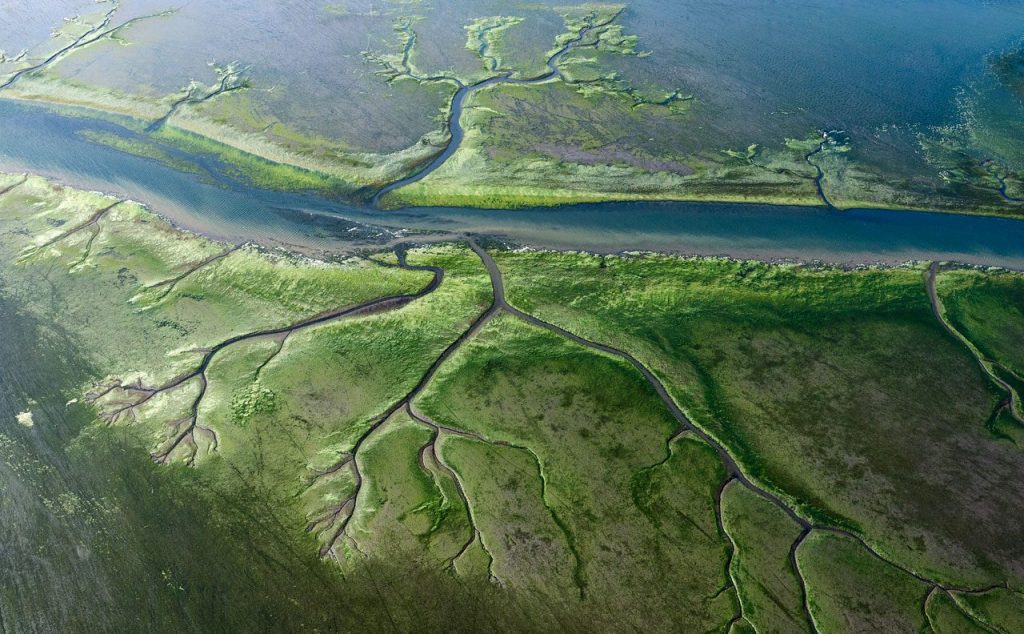
Alaska truly is the last frontier. Its abundant, untouched landscapes and habitats take us to a place where wildlife and wilderness rule, and the outside world has no presence. This refuge where worlds collide – wetlands, volcanoes, underwater meadows – few and far between places like this exist in our world. The wildlife, the Alaskan culture, the plant species, all of it deserves to be protected, and more importantly, studied and shared. The U.S. Fish and Wildlife Service says, “The scenery, wildlife, and wilderness experiences that the refuge offers are truly unique – the experience of a lifetime.”. If the folks who run the show say Izembek is amazing, it must be a natural spectacle, even by Alaska’s standards.
Written on: December 22nd, 2025 in Wetland Animals
By Alison Stouffer, DNREC’s Wetland Monitoring and Assessment Program If you are like me, you have likely been driving down a rural road, paddling through a tidal wetland, or going for a stroll through a state park and seen a furry, brown animal that had you doing a double take. That wasn’t a weird looking […]
Written on: September 24th, 2025 in Natural Resources, Wetland Research
By Alison Rogerson, DNREC’s Wetland Monitoring and Assessment Program Introducing Tidal Freshwater Most people are familiar with tidal wetlands that line the Delaware Bay coast and the Inland Bays. Likewise, most of us can recognize a freshwater wetland along a stream or in a forest. But what about tidal freshwater wetlands? That’s not a typo. […]
Written on: September 24th, 2025 in Education and Outreach, Natural Resources
By Kathryn Lienhard, Delaware Sea Grant Did you know that in 2022, more than 10% of the electricity generated in the U.S. came from wind energy? Humans have harnessed the power of the wind for thousands of years – most iconically, through traditional windmills – while modern wind turbines continue to advance in design and […]
Written on: September 24th, 2025 in Education and Outreach, Wetland Animals
By Olivia Allread, DNREC’s Wetland Monitoring and Assessment Program Anything new certainly can be intimidating. Sports, art mediums, cooking, recreational activities, you name it, they all have their own culture and lingo that some spend a lifetime mastering. Particularly in the natural resource world, certain topics or hobbies can sometimes come off as an exclusive […]
Written on: July 22nd, 2025 in Education and Outreach, Wetland Research
By Olivia Allread, DNREC’s Wetland Monitoring and Assessment Program Many millions of years before us Homo sapiens appeared, there lived a vast array of plants and animals in extensive environmental systems we no longer see today. With Earth having formed 4.6 billion years ago, there are certainly a lot of eras between the cloud of […]
Written on: July 22nd, 2025 in Natural Resources
By Alison Stouffer, DNREC’s Wetland Monitoring and Assessment Program Congratulations folks! You have made it to the fifth, and final, installment of the cross-country wetland road trip. I would be lying if I said this wasn’t a bittersweet moment. I am excited to explore what the Northeast United States has to offer, but sad to […]
Written on: July 22nd, 2025 in Natural Resources, Wetland Restoration
By Kristen Travers, Delaware Nature Society We’re all uncomfortably aware of how hot this summer has been. On a recent 90+ degree afternoon, while walking with a group of people, the first request was simple: “Let’s head to the stream in the shade.” As we stepped under the tree canopy along the streambank, the temperature […]
Written on: May 21st, 2025 in Education and Outreach
By Maddie Fox, Delaware Center for the Inland Bays The Delaware Center for the Inland Bays is a private nonprofit organization and one of 28 National Estuary Programs in the nation. Its creation was the culmination of 20 years of public participation and investigation into the declining water quality of the Inland Bays and the […]
Written on: May 21st, 2025 in Education and Outreach
By Olivia Allread, DNREC’s Wetland Monitoring and Assessment Program We know. This one sounds a little crazy. And by no means are we saying to throw on some boots and go out into the waist-deep mud to get yourself an afternoon snack. But, to add to all the other ways wetlands are wonderous, we wanted […]